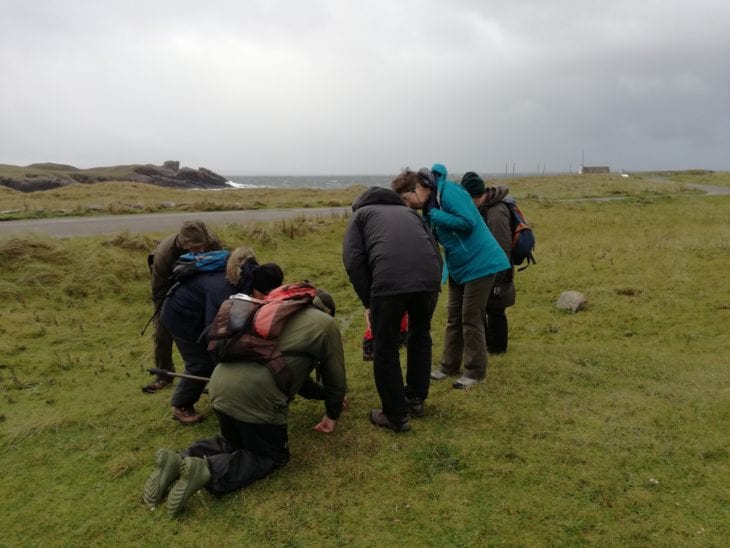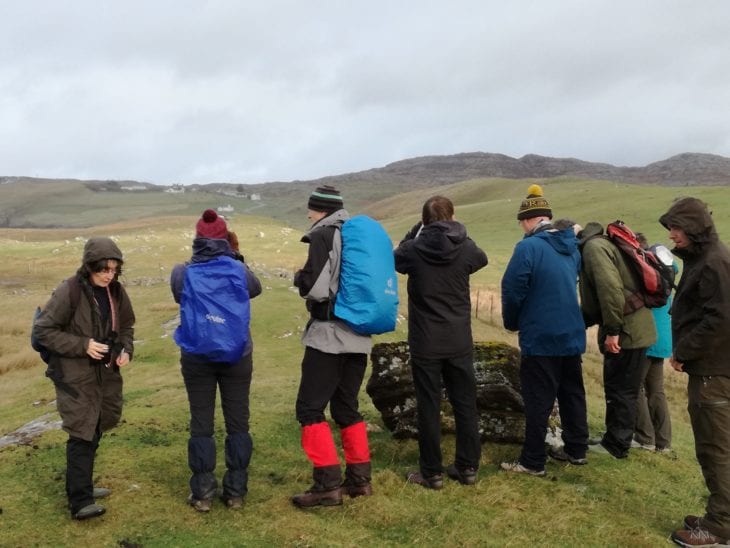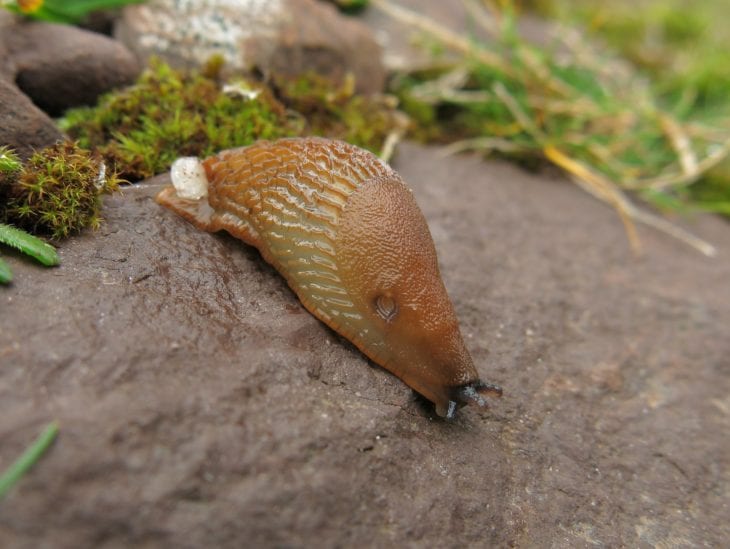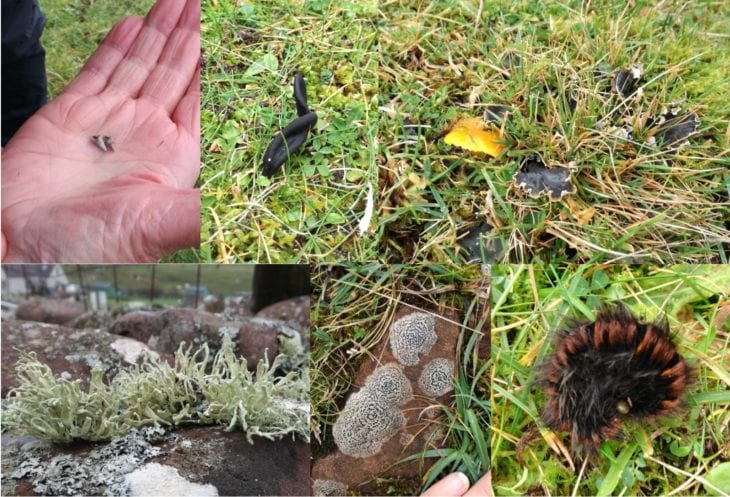A walk on the wild side at Clachtoll
,
Another rough week of weather but the sun tried to shine for us and people came out to join myself, Andy, David and Avril on a walk around Clachtoll, learning about wildlife recording and its importance. So fully waterproofed up (just in case!), we headed out!


Assynt Field Club, of which Andy, David and Avril are members, are corelating wildlife sightings across Assynt. The importance of this is to see how species distributions and populations change over time as well as if there are new species entering Assynt due to changes in climate or habitat. Such a species is the Vulgar or Spanish Slug (Arion vulgaris) which we spotted on a rocky outcrop near the beach. It was one of the first sightings of the day and although some may think it not be the most exciting species we could have seen, it is only the second ever record for Assynt (first recording earlier this year). A last-minute fly over by a White-tailed eagle soaring above Clachtoll led to another first sighting for one of our couples.

After our walk we headed back to Flossie’s Beach Store for coffees to warm up and learn how to enter these sightings on the Assynt Field Clubs website. In total we gained 35 records in this short time to add to the Field Club database as well as photos to ID species such as the range of waxcap fungi seen on the day. Species identified included:
- Greylag Goose (Anser anser)
- Rock Pipit (Anthus pertosus)
- Meadow Pipit (Anthus pratensis)
- Silverweed (Argentina anserina)
- Vulgar or Spanish slug (Arion vulgaris)
- Purple Milk Vetch (Astragalus danicus)
- Buzzard (Buteo buteo)
- Banded Snail (Cernuella virgata)
- Pointed Snail (Cochilcella acuta)
- Garden Snail (Cornu aspersa)
- Red throated Divers (Gavia stellata)
- Earth Tongue Fungi (Geoglossum cookeanum)
- Dove’s-foot Crane’s-bill (Geranium molle)
- White Tailed Eagle (Haluaeetus albicilla)
- Herring Gull (Larus argentatus)
- Black Backed Gull (Larus marinus)
- Fairy Flax (Linum catharticum)
- Fox Moth Caterpillar (Macrothylacia rubi)
- Common Shiny Woodlouse (Oniscus asellus)
- House Sparrow (Passer domesticus)
- Dog Lichen spp. (Peltigera hymenina)
- Dog Lichen spp. (Peltigera membranacea)
- Shag (Phalacrocorax aristotelis)
- Cormorant (Phgalacrocorax carbo)
- Common Reed (Phragmites australis)
- Buckthorn Plantain (Plantago coronopus)
- Sea Ivory Lichen (Ramalina siliquosa)
- Wild Water Cress (Rorippa nasturtium-aquaticum)
- Ragwort (Senecio jacobaea)
- Prickly Sow Thistle (Sonchus asper)
- Redwing (Turdus Iliacus)
- Blackbird (Turdus merula)
- Fieldfare (Turdus pilaris)
If you would like to know more about the species of Assynt or input sightings into the database, please visit the Field Clubs website www.assyntwildlife.org.uk. Scroll to the bottom of the home page for the recording form.
Thank you to the David, Avril and the Assynt Field Club for helping ID species and joining us on the event, Hi-life Ranger Andy for his species knowledge and help and lastly Flossie’s Beach Store for refreshments and wi-fi.

